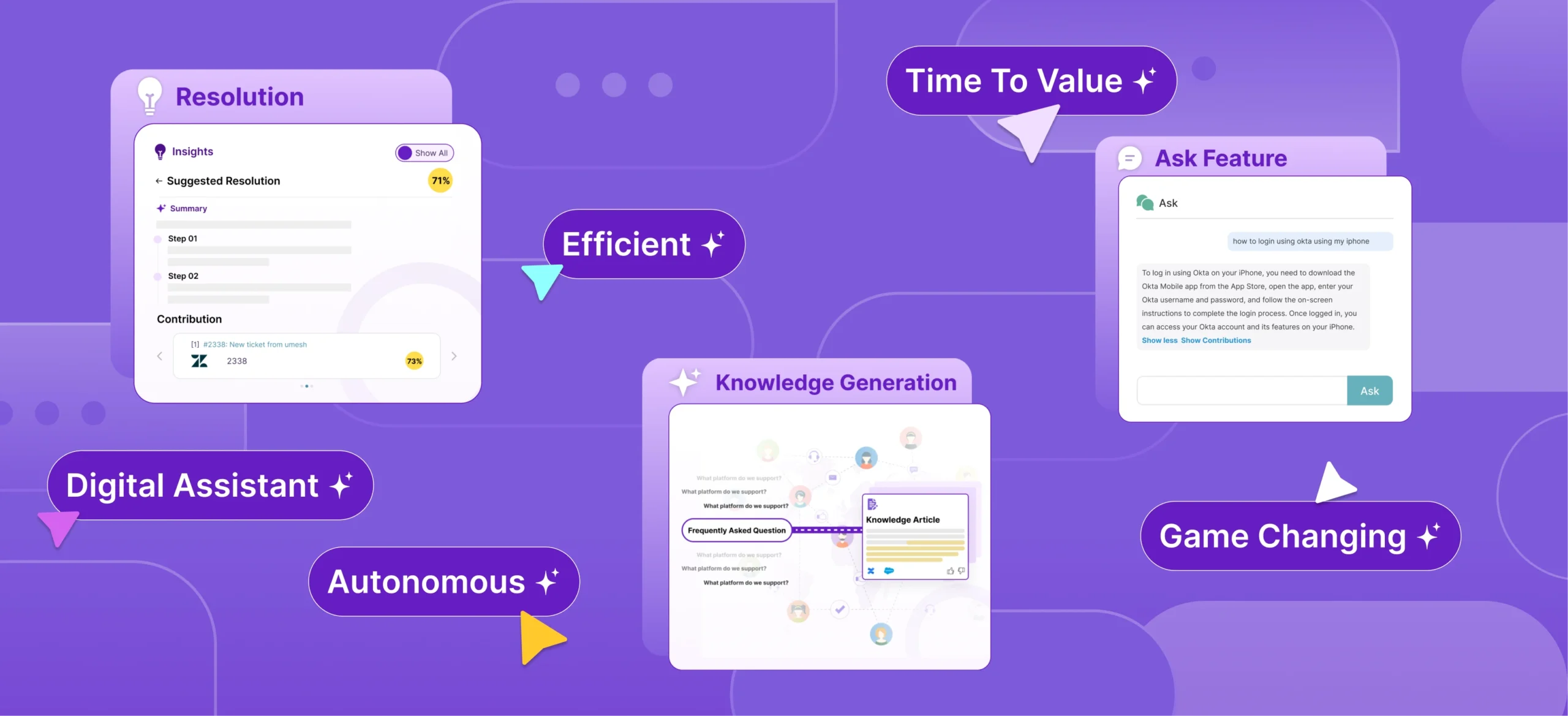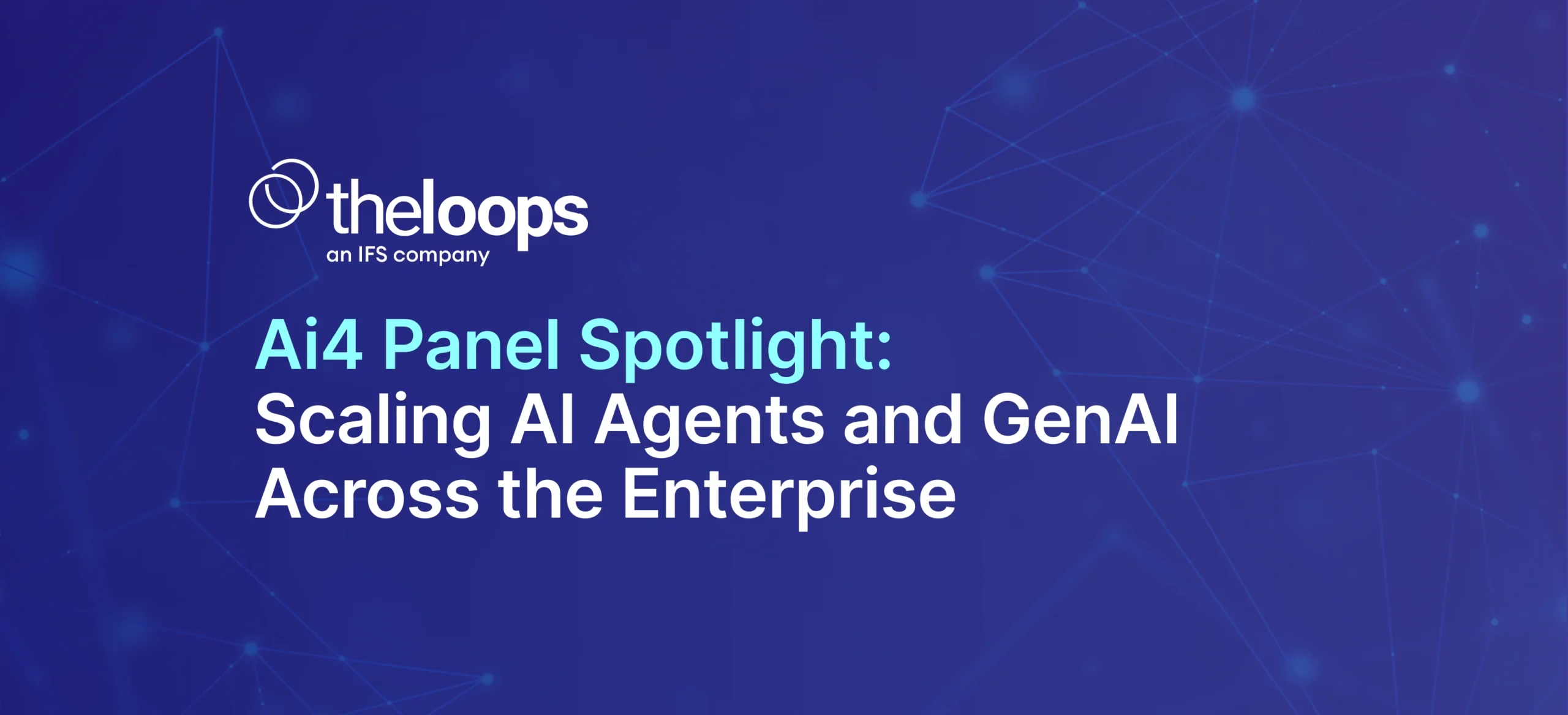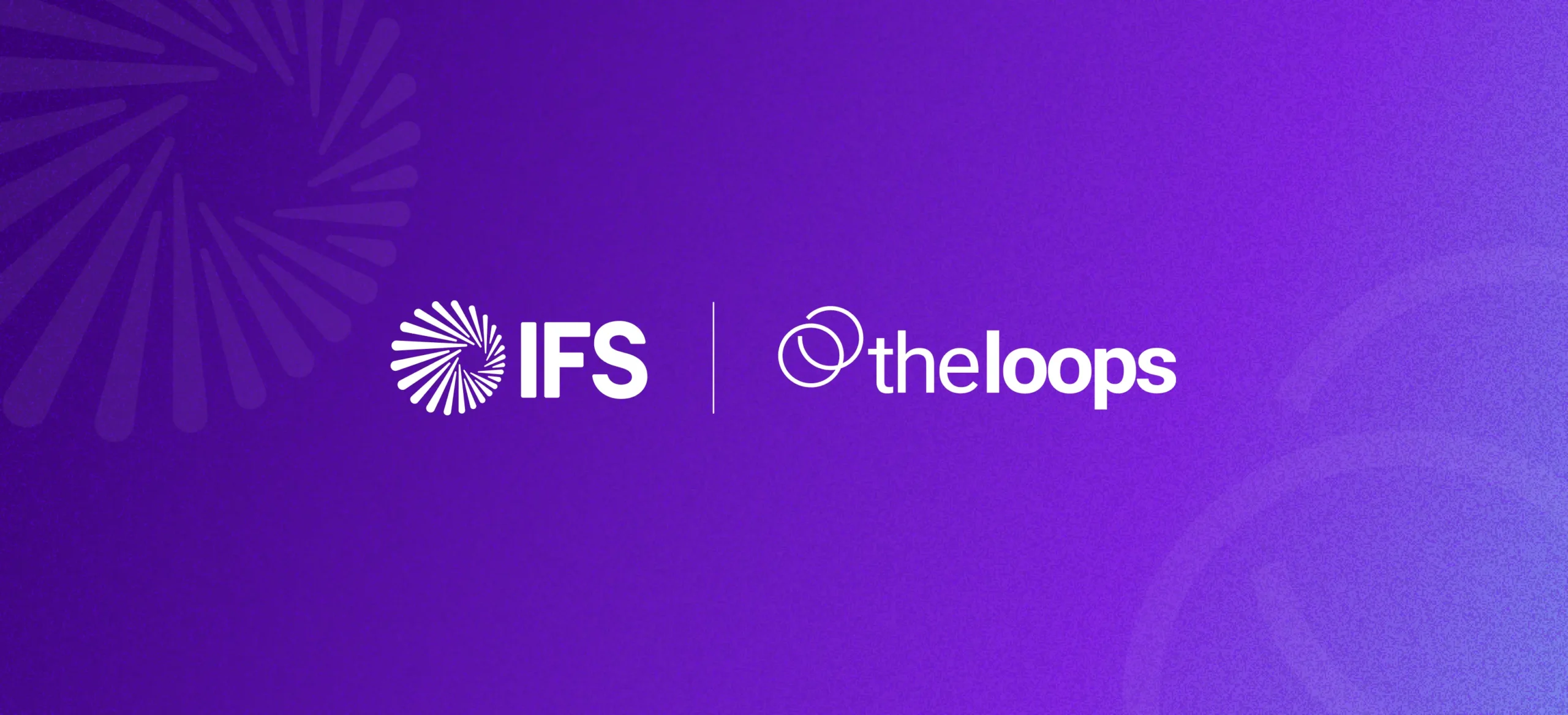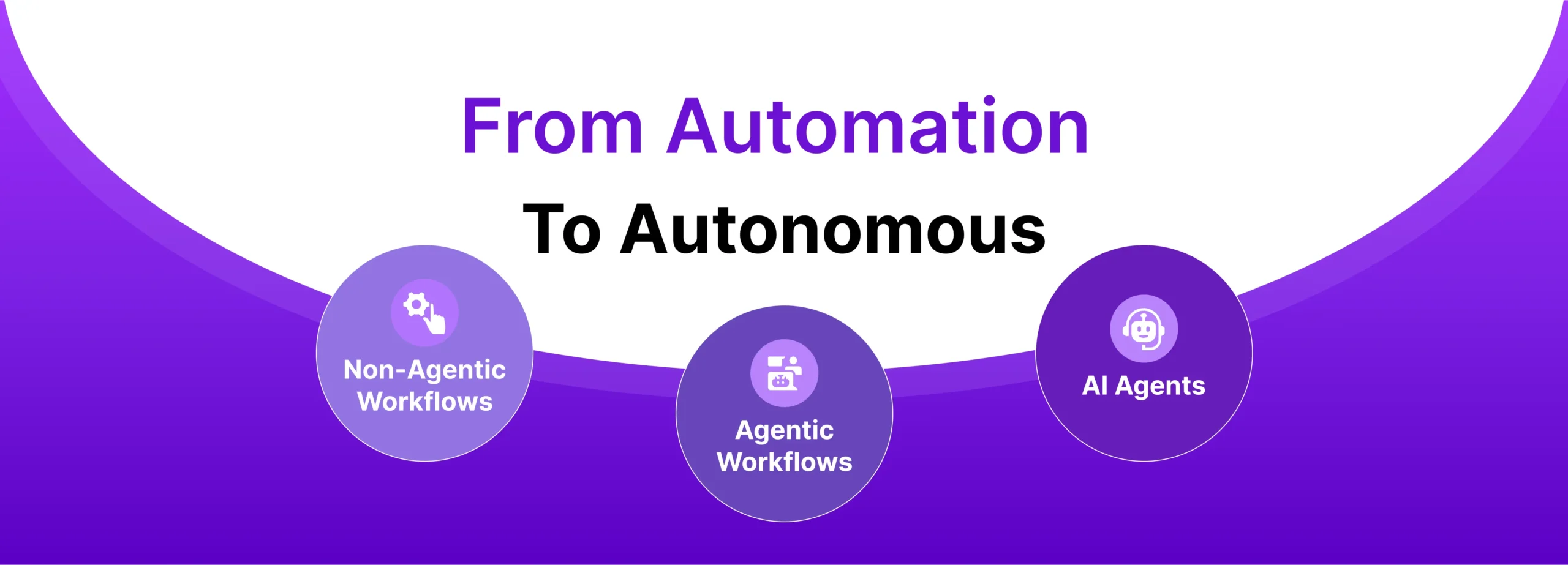The rise of AI has highlighted areas where it can make the most impact with Customer Support operations consistently ranking as a front runner. Much of the discussion surrounding AI adoption in CX right now is focused on two key areas: Agentic AI and AI Agent Copilots.
Why all the buzz?
Agentic AI is the driving force behind 10x productivity and efficiency. It immediately contextualizes customer information in real-time and acts on it. This happens without any human input or direction.
Agentic AI refers to autonomous AI agents, also known as digital assistants. They can adapt, make decisions, and take actions independently. They use real-time data and workflows, continually improving through feedback.
What’s equally as important to point out is that not all Copilots have Agentic AI at their core.
Some Copilots have cognitive capabilities. But many are just decision trees operating within defined constraints. They focus on automating a single business process.
Breaking Down The Types of AI Copilots
Most support teams have used some form of automation in agent workspaces. This includes classic RPA, task automation, or unidirectional system syncs.
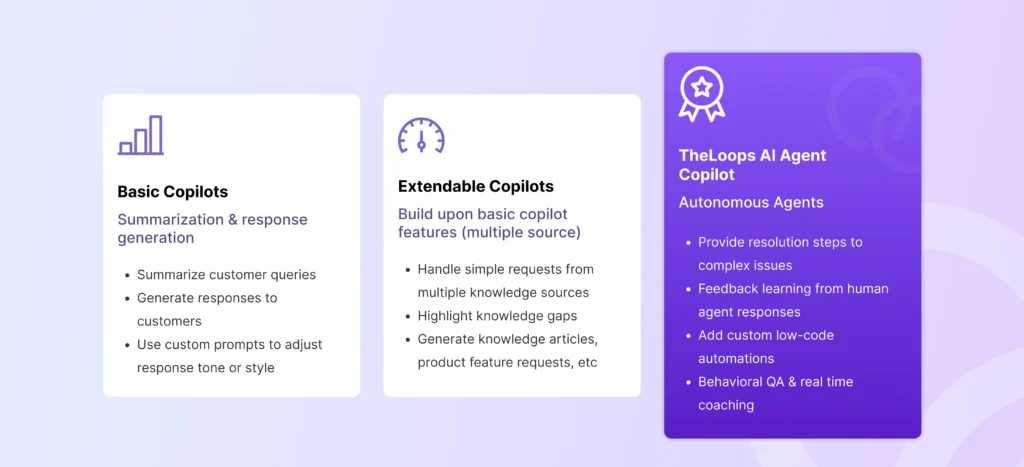
These are good starting points. But true productivity gains from AI have clear cost/benefit advantages. They are achieved through deep insights and resolution recommendations for complex issues.
Across CX right now, nearly every company is offering a Copilot but, not all are the same. For example, here are 3 varying types of Copilots in the market.
Basic Copilots And Their Capabilities
- Basic AI Copilots in customer support begin with summarization capabilities. They quickly condense customer data into concise summaries. This helps agents grasp the essence of a conversation instantly.
- Summarization is useful when agents need to handle multiple cases at one time. But the onus is still on agents to reply to the customer and decide what steps to take to resolve their issues and challenges.
- Another function of basic Copilots is that of response generation. Basic Copilots assist agents by suggesting possible replies based on predefined templates, tones or other insights.
- However, these responses are often generic. They focus on maintaining positive communication. They do not focus on resolving the underlying issue for the customer.
The next level of Copilots that Support leaders can choose from are Extendable Copilots.
Extendable Copilots And Their Capabilities
- Moving beyond basic Copilot functionalities, Extendable Copilots provide information retrieval which helps increase agent productivity.
- Extendable Copilots pick up this information from multiple knowledge sources.
- Extendable Copilots are also able to highlight knowledge gaps and they can generate knowledge articles, product feature requests, etc
However, when it comes to case resolution, there is still a lot of reliance on human oversight as they with Extendable Copilots.
Advanced, Autonomous Copilots with Agentic AI such as TheLoops
- Advanced AI Agent Copilots shift the focus. They go beyond assisting with responses and simple requests. They actively drive resolutions in complex scenarios.
- They can perform all of the functionalities of Basic and Extendable Copilots while also analyzing past cases and resolutions and learning how to improve with feedback from their human agent counterparts.
- At their core, advanced AI Agent Copilots can understand the symptom of a customer case, provide a resolution and simultaneously trigger an action and workflow all on their own.
- By using historical data and AI, advanced Copilots guide agents to effective solutions. This reduces resolution times. It also significantly improves customer satisfaction.
- Moreover, Advanced AI Agent Copilots go beyond just resolution summaries; when paired with AutoQA, they offer real-time coaching and quality improvement guidance.
As you explore all of the Copilot offerings in the market, the key question to ask yourself is, ‘Which ones actually leverage Agentic AI and which ones are still dependent on rule based and NLP?’
As a bonus, Agentic AI can scan and scour your help articles. It can check past case resolutions, FAQs, and more. This works no matter how vast your assets are.
This is why it’s vital to understand the differences between Basic Copilots, Extendable Copilots and advanced AI Agent Copilots such as TheLoops.
Exploring Agentic AI Further
Unlike passive AI tools that simply provide recommendations or summarizations, Agentic AI can handle complex cases and actions. It works based on predefined goals, rules, or learned behaviors. It can independently initiate actions to achieve specific objectives. This often occurs in dynamic and complex environments.
The key characteristics of Agentic AI include:
- Autonomy: Agentic AI can function independently. It makes decisions and takes actions without constant human intervention. This autonomy can vary from simple automation to complex decision-making.
- Goal-Oriented Behavior: Agentic AI is designed to achieve specific goals. This could be optimizing a process or responding to inquiries. It has memory and can adjust its strategies based on feedback to meet goals.
- Adaptability: Because it has memory, Agentic AI can learn from interactions. This enables it to adapt to new situations and improve over time. This learning is based on machine learning or other AI techniques.
- Contextual Awareness: Agentic AI can understand and interpret its context. This allows it to make more informed decisions. This might include user preferences or the current state of a system.
- Interactivity: Agentic AI often interacts with humans or other systems. It provides suggestions or takes actions based on input. It can even collaborate with users to achieve a shared objective.
Simply put, Agentic AI moves beyond basic automation by adding layers of decision-making and adaptability, enabling it to function as an assistant and collaborator across various domains including customer support.
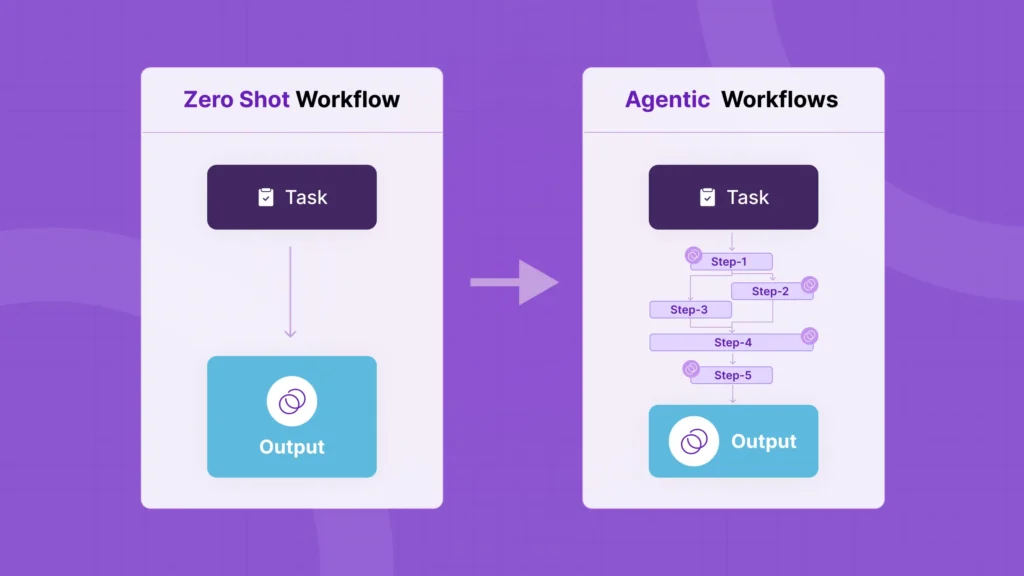
Agentic AI and The Enterprise
The LLM landscape is evolving rapidly with the impending release of GPT-5/Llama3, which will raise the bar. Simultaneously, multiple models with GPT-4-level performance are now available at attractive price points. Enterprises can choose from models from different sources. They have varying cost-performance levels based on use-case and needs. That said, it’s crucial to pick a flexible vendor. Your platform must adapt to changing business needs.
Some of the key reasons why Enterprise companies are increasingly exploring Agentic AI Autonomous Copilots include:
Efficiency Gains: Agentic AI can automate repetitive and low-value tasks. This frees up agents and managers to focus on more strategic activities.
Scalability: Agentic AI can standardize processes. It ensures knowledge workers have access to the same level of support. This is true regardless of location, training, or scale.
Employee Experience and Retention: Agentic AI can reduce the cognitive load on employees. It handles many tasks without their involvement. This leads to a more fulfilling work experience. This, in turn, helps reduce burnout and increases retention among agents.
Cost Optimization: By automating routine tasks, enterprises can optimize costs. This reduces the need for additional hires. It also ensures new hires can ramp up faster. They can perform at the same level as tenured peers.
Personalization and Customization: Agentic AI can tailor information, tools, and workflows to the specific needs and preferences of customers, enhancing their effectiveness and satisfaction.
Future-Proofing the Workforce: As Agentic AI becomes more integrated into business processes, companies that adopt it are better positioned to future-proof their workforce, ensuring that employees are equipped to work alongside advanced technologies.
Read how Gainsight was able to boost efficiency and save agents 300 hours per month with TheLoops AI Agent Copilot.
Take this complex billing inquiry for a B2B SaaS company as an example of how Agentic AI works.
1st Step: Initial Customer Interaction
The Customer initiates a live chat or call to inquire about an unexpected charge on their SaaS subscription bill.
- Support Agent: Receives the inquiry in their dashboard.
- AI Agent: Immediately identifies the type of query (billing-related) and pulls up the customer’s account, previous interactions, billing history, and subscription details, ready for the human agent.
2nd Step: Contextual Summary
- AI Agent: Summarizes key details (e.g., the customer has been charged twice in one month due to a recent plan upgrade) and presents this information to the support agent in a quick overview.
- Support Agent: Glances at the summary, avoiding the need to manually sift through account records.
3rd Step: Suggested Solutions
- AI Agent: Suggests a set of potential solutions based on similar resolved cases, such as issuing a refund, providing a credit, or explaining the new billing structure. It offers the pros and cons of each option.
- Support Agent: Reviews the suggestions, selects the most appropriate solution (e.g., issue a refund), and personalizes the response for the customer.
4th Step: Automating Routine Tasks
- AI Agent: Automatically initiates the refund process and generates an email confirmation to the customer, freeing up the support agent from administrative tasks. It also ensures the updated billing records reflect the change.
5th Step: Continuous Learning and Improvement
- AI Agent: After the issue is resolved, the AI updates its knowledge base to include the newly learned billing scenario, further improving its understanding for future inquiries.
6th Step: Escalation Handling
If the customer raises a new, more complex issue (e.g., confusion about specific charges that requires further investigation):
- AI Agent: Immediately offers to escalate the case to a higher tier or specialized billing team, while compiling all related documents, chat logs, and case history for the next agent in line.
7th Step: Post-Interaction Summary and Analytics
- AI Agent: After the call/chat is closed, it creates a detailed summary of the interaction for future reference and generates an automated post-call survey to gauge customer satisfaction.
- Support Agent: Can now move to the next ticket without spending additional time documenting or closing the previous case.
AI Agent Copilots: A Wide Spectrum, Choose Wisely
A clear understanding of Agentic AI and selecting the right Copilot built on it can be the key to maximizing your ROI when implementing AI for CX operations.
TheLoops CTO and Co-Founder Ravi Bulusu holds 26 patents for AI and machine learning. He says, “Effective AI Copilots are more than digital assistants. They’re sophisticated problem-solving partners.” While basic copilots might suggest responses or facilitate information retrieval, truly advanced systems go further. They guide our agents step-by-step through complex issue resolution processes, turning good support into great support. This is the future of customer service – where AI doesn’t just assist, but actively elevates the capabilities of our human agents.”
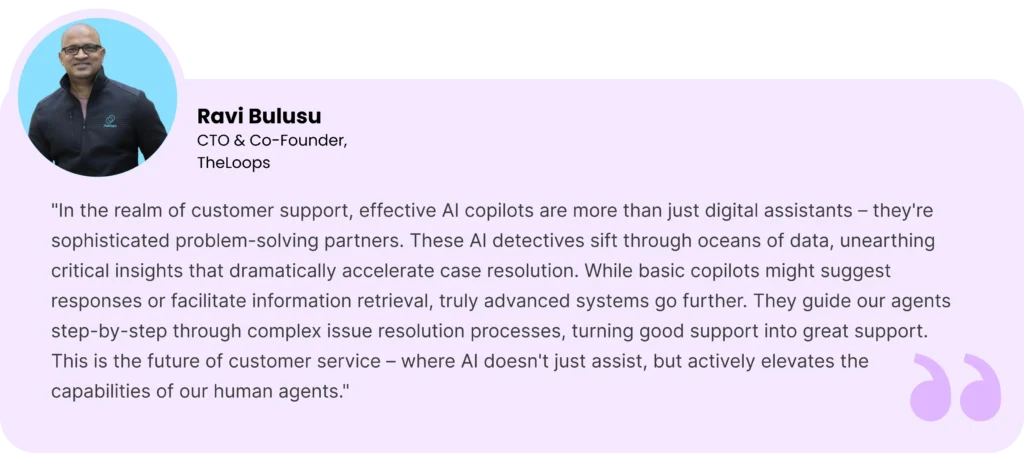
To resolve customer issues with precision, your agents need an Agentic Copilot. It must provide the immediate steps required to solve complex issues. It should also give managers direct understanding of agent shortfalls through AutoQA.
Make sure to drive your choices based on desired business outcomes. The market offers various platform-level options. Incumbents are embedding AI or offering Copilots to accelerate time-to-value for users. Meanwhile, startups and LLM providers are taking an AI-native approach. They are reinventing vertical use cases. They are also creating new platforms that transform cost, performance, and user experience.
Prioritize workflow and performance benchmarks. Ensure that security and governance are included as part of the platform without additional charges. The outputs of models should be transparent, not black boxes. Look for platforms that can learn and train from human input. This allows for continuous improvement within the AI frameworks.
Agentic AI Copilots Are Your Path Towards Productivity: Final Thoughts
Thanks to the wide stream adoption of ChatGPT, the majority of Support leaders are familiar with Large Language Models and AI prompts. Agentic AI goes way beyond that.
Agentic AI has memory and it understands what’s been done in the past. It learns how to suggest a more productive path forward. It also has built-in governance to ensure it adheres to any privacy, data or other protocol to adhere to.
Many of today’s Copilot options focus on assisting agents. But very few offer the full functionality and productivity gains of Agentic AI.
As we close this out, we’ll recap the points made throughout this blog:
- Selecting the right Agentic AI and AI Agent Copilot for your team is essential. You want to invest in a solution that will take you and your team forward and leapfrog your results vs crawl along.
- Treat this like training a new agent. It’s not about accuracy on day one. AI agent performance correlates with its training data quality. You don’t need perfect data to start with an AI solution. Even at 60% accuracy, it will improve as it learns. This is just like a new agent gaining experience.
- As a bonus, you’ll want a Copilot that can generate and update knowledge with each case closing and provide your agents the ability to ASK the Copilot questions.
TheLoops AI Agent Copilot does all that we’ve described and more. Ensure your team’s productivity and efficiency through our unique blend of AutoQA and our Agentic AI. Need a little more convincing? ; )
